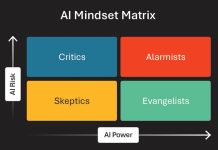Sales training and enablement leaders, it’s time to level up. Buyers are searching for more information on their own. That means they are engaging with your content further down the funnel. As a result, your content can’t be just a companion to a sales-led customer conversation — it needs to be able to stand on its own, address your buyers’ big questions, showcase your unique value and motivate action.
When buyers eventually do talk to your reps, those conversations will most often happen remotely. This makes all sellers “inside sellers,” which opens the door to improving their productivity, performance and cost structure, while also imagining how former field sales teams should be operating on a cadence versus an expense account.
There are four forever changes transforming sales training and enablement from here on out:
- Marketing is the sales development team.
- All selling is inside selling.
- Enablement is now a series of sprints.
- Customer success is customer selling.
You can jump on these changes and charge toward the new reality of selling, or you can hold back and be told to address these issues to catch up with your competitors. Whatever choice you make, this article presents a glimpse into your future.
Let’s look at each of the four forever changes in more detail.
Marketing is the sales development team
The B2B buying process isn’t as linear or predictable as most companies assume. Buyers are interacting with content much further down the buying journey. The buying process is more complex and convoluted than ever, handoffs are less defined, and buyers are getting wrapped around the axle trying to figure things out for themselves.
The companies that win will make it easier for people to self-serve and make more buying-related decisions without speaking to a salesperson. This will transform the messaging, content and interactions driven by your marketing department and challenge companies to shift their expectations for when something converts to a sales lead.
For example, we are currently conducting brain research and field studies to determine the performance of traditional static marketing content such as eBooks versus more interactive assets. Which types of content and experiences drive self-service buyers to take more action, accelerate their interest and move them further down the proverbial funnel?
How will websites change to encourage more interaction? Will demos, for example, look more like an online trade show exhibit where buyers engage virtual sales presentations, video demonstrations and precise content based on a “choose your journey” approach? Will these demos then steer prospects to a custom portal on a website where they are invited to collect what they find and share out to their buying team members?
Takeaway: Sales training and enablement must become buyer enablement regardless of the channel and preferred buyer experience.
All selling is inside selling
Before the pandemic 70% of B2B selling was already “inside selling.” Nearly half of all sales were being done by official inside selling teams, while 50% of outside sale teams’ customer communications were taking place in a virtual setting — email, phone calls and web conferences.
In an instant, selling became 100% virtual. It’s going to be a long time before customers go back to their buildings, let alone let reps in to see them. And it’s going to be a long time before CFOs will willingly sign big sales expense checks again.
As a result, every company is now taking a critical look at how to finally get the productivity out of their field sales team they’ve been wanting for 20 years. Now that these sellers are stationary, the feeling is they can be put on cadences that resemble inside sales processes and productivity targets instead of loosey-goosey field behaviors.
In some cases, companies that previously only had field
sales teams are standing up pilot inside sales programs because they don’t believe long-tenured field sales reps can make the transition. Instead, they bring in an entirely new set of sellers to determine the feasibility of such a move, as well as test the best messaging, content assets, skills, touch patterns and technology for their company and go-to-market strategy.
Some are talking about upskilling their sales development reps to conduct deeper discovery and qualify opportunities further because they are more efficient and operate with a more rigorous discipline and activity level than field salespeople. Other companies are discussing how to turn their business development reps into quota-carrying salespeople for certain lower-end segments and product lines.
From there, we’re also seeing companies looking to convert some of their previous inside selling activities to even lower-cost and more efficient digital touches. They are trying to determine how many and what types of digital interactions, along with how few and what type of human interactions, produce the best results with certain client segments and product lines.
Takeaway: Sales training and enablement must take a lab mindset to identify the most productive and impactful inside selling motions while equipping teams for high-performance virtual customer conversations.
Enablement is now a series of sprints
Traditional learning paths with catalogue-, competency- and calendar-driven training models just can’t keep up with the accelerating pace of business. When unplanned business needs arise, you need to launch dynamic training that equips your team with the messaging, content and skills they need to respond specifically and immediately.
To deliver training at the speed of business, organizations need to move from problem recognition to complete enablement rollout in weeks, not months. The sudden universal acceptance of virtual modalities as a training alternative allows you to do this at scale, reaching hundreds and thousands of reps in a fraction of the time required by previous approaches such as road shows.
Speed is the new premium, which means you must plan and execute like a shark is chasing you. Market changes, competitive threats, key product launches, pricing and contract adjustments, and strategic business shifts are just a few examples of key initiatives that pop up during a year and need a complete messaging, content and skills kit, as well as fluency coaching to make sure your reps are “fit for duty.”
Another consideration is adapting your training and enablement based on KPIs in your systems. This data shows where each salesperson is struggling. So, instead of relying on managers to figure out where someone is struggling, you proactively raise the flag and push a relevant dose of skills training aimed specifically at moving the needle on the lagging KPI for each rep, whether that’s pipeline development, deal closing, profit margins or client expansion.
There’s nothing in your traditional training curriculum or static sales process to help you with any of this. Yet, all executive eyes are on these threats or opportunities. And, your sales reps find themselves in a deficit, unsure how to respond most effectively, but wanting something desperately that makes them relevant to the market and their customers.
These are the exact moments where salespeople, who are continually being marginalized by buyers, can step in and add value. It’s where the desired moniker of trusted advisor can be earned, but only if your organization can rally in an instant with the precise story and skills needed for the emergent situation.
Takeaway: Sales training and enablement must move from just-in-case training to just-in-time training with a complete custom kit, including messaging, content and skills that match the moment.
Customer success is customer selling
By some estimates, 70% to 80% of the average company’s annual revenue — and as a result, growth — comes from existing customers. However, most marketing and sales organizations take a one-size-fits-all approach, and in some cases take for granted that good service will ensure customer loyalty and expansion.
Recent research shows this can actually backfire when it comes to keeping and growing existing business. Marketing needs to develop a second dedicated funnel for customer expansion. The Customer Success function, originally put in place to ensure implementation and utilization goals, must proactively join forces with account managers to drive commercial activity such as renewals, price increases and up-sell/cross-sell.
Some of the biggest, best companies in the world are taking a “no handoff” approach to customer expansion, meaning that sales and customer success teams are working together from early in the initial sales cycle and continuing throughout the entire customer lifecycle. This requires a common framework for engaging the most crucial commercial moments, and, most importantly, raising the bar on documenting business impact. You must go beyond adoption and utilization dashboards to focus on higher-order department and corporate business metrics.
As a parallel layer, marketing is adapting a distinct customer expansion stance separate from its traditional customer acquisition function, with dedicated staff developing custom messaging, content and outreach programs timed to key milestones in the existing customer journey.
Takeaway: Sales training and enablement must help integrate the selling and customer success functions in a seamless commercial approach to keeping and growing existing customers.
Where to next?
This is just a quick overview of the four forever changes transforming sales training and enablement. Hopefully, you are working on these changes and charging toward the new reality of selling.
While I’m sure no one is still ducking, covering and hoping this too shall pass, there is one question that remains: Are you moving fast enough?
Tim Riesterer is chief strategy and research officer at Corporate Visions, a provider of science-backed marketing and sales training programs and consulting services for B2B companies.




